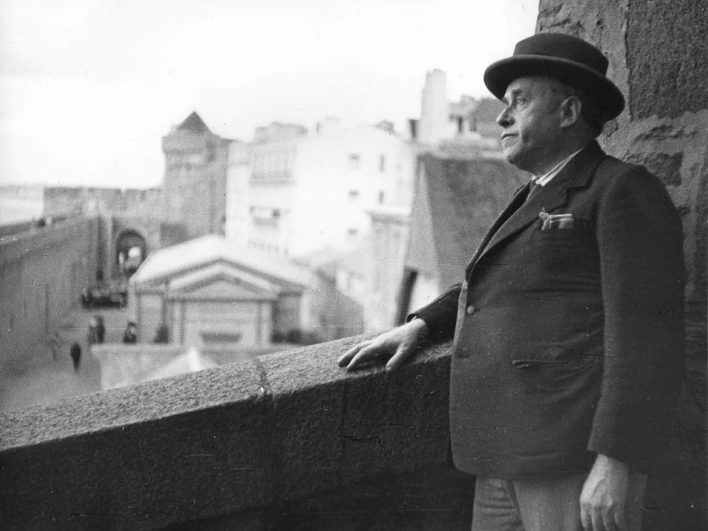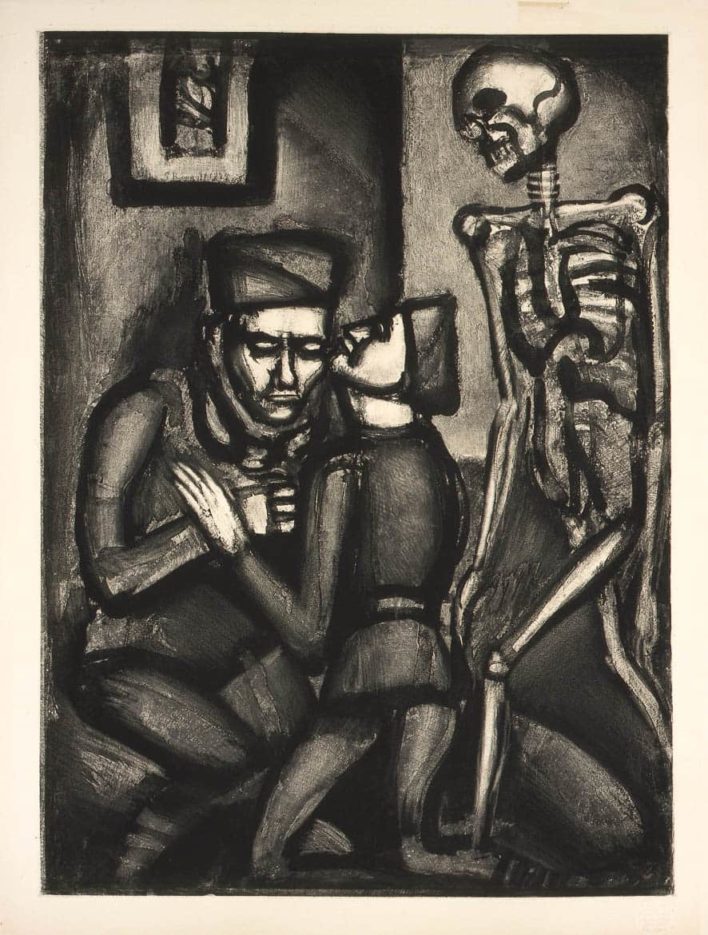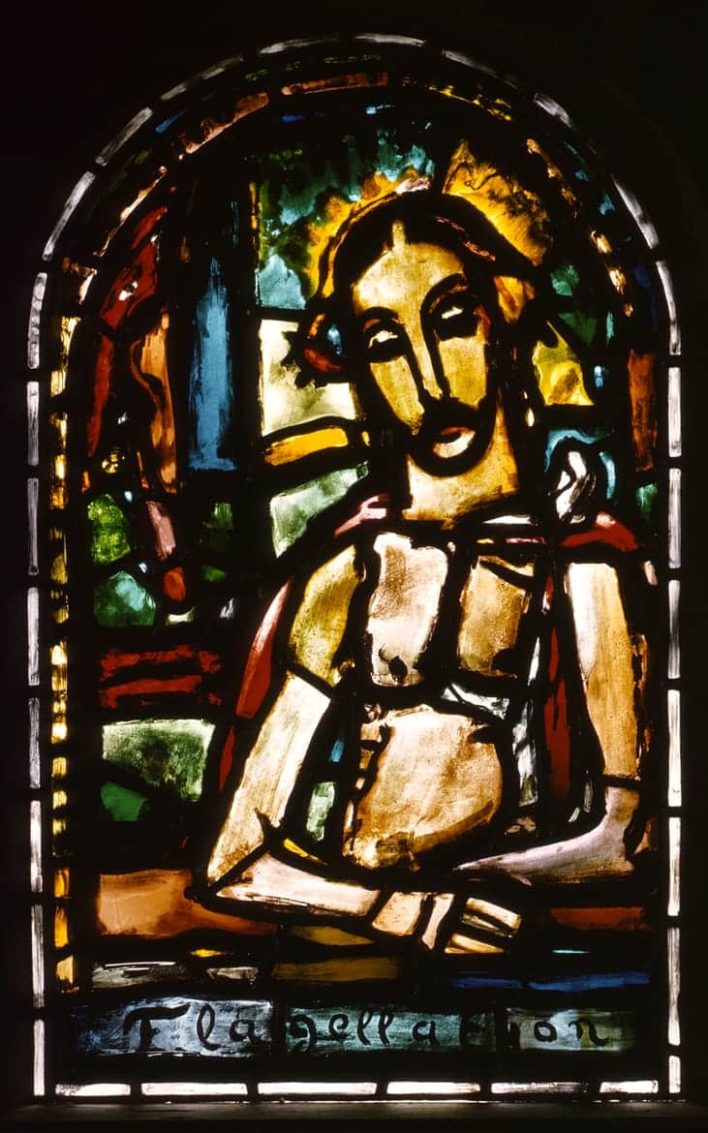Worldwide recognition
An increasing number of exhibitions were held in France, Brussels, London, New York, Munich and Geneva.
Rouault visited Saint-Malo in 1932 Pierre Matisse, an art dealer and son of the famous painter visited him and became the main ambassador of his work in the United States.
Now in his sixties, Rouault saw his work gain worldwide recognition. Reviews were abundant and unanimous. His paintings and prints were gaining growing success. His art became calmer in these years of success and financial security. Although life for Rouault was more peaceful and stable, nevertheless he underwent several years of hardship including the death of Vollard, the war, the occupation and its aftermath, as well as his lawsuit with the heirs of Ambroise Vollard.

Photograph by Pierre Matisse

Tensions with Ambroise Vollard
Vollard commissioned two other illustrations Le cirque de l’Étoile filante(The Shooting Star Circus) which was published in 1936 and Passion which was published in 1939. Vollard reproached the artist for his slow pace. Rouault found it increasingly hard to withstand the pressure he was under. From 1934, his relationship with Ambroise Vollard deteriorated.
A.V wants everything at once (I was wrong to have not left in August) paintings, etchings, black and colour […] and what else? original models and woodcuts! In the hundreds…he thinks they are made out of thin air…It is very frustrating, without saying anything more […]
Really! He gets his paintings…but as soon as he gets them he will ask for more without a thought for the works already in progress, which in turn will take longer and longer.
Georges Rouault to André Suarès, Correspondance
Death of Ambroise Vollard and the Second World War
On 22 July 1939, Ambroise Vollard was killed in a car accident. Rouault was profoundly affected by his death.
The Second World War broke out and the painter was forced to take refuge, first in his country house in Beaumont sur Sarthe and then in Golfe-Juan in the south of France following the advancement of the Germans. His house and studio were pillaged by the Germans.
The Vollard lawsuit
In 1940, Vollard’s heirs had seals placed on Rouault’s studio on Rue Martignac. The works were made completely inaccessible to the artist.
Several attempts at negotiation failed. One of the canvases from the studio was sold on the public market. Shocked, the artist was forced to launch a lawsuit against the heirs to try to recover his unfinished works. And so began a spectacular lawsuit against the Vollard heirs which would last several years and be morally exhausting.
On 10 July 1946, the Paris courts ruled in favour of Rouault, ordering the heirs of Ambroise Vollard to return hundreds of unfinished canvases to Georges Rouault or face a penalty of 100,000 Francs per canvas. The decision was confirmed by a ruling from the Paris Court of Appeal on 19 March 1947. This ruling confirmed that the painter was the rightful owner of his works “provided that he had not given them away of his own free will”. This court ruling became jurisprudence and was largely covered in the press.


Tapestries and stained glass
Between 1932 and 1938, Rouault’s works were translated into some fifteen tapestries by the Aubusson tapestry workshops under the artistic direction of Marie Cuttoli.
Cartoons and paintings by Rouault were translated into five stained-glass windows in 1945 by the Ateliers Hébert Stevens for the church of Notre Dame de Toute Grâce, in Plateau d’Assy in Haute-Savoie.
Build the church of the 20th century: such was the ambition of those who sought to change the conception of sacred art on the eve of the Second World War. Before the church of Ronchamp built by Le Corbuisier or the church of Vence , decorated by Matisse, the church of Plateau d’Assy in Savoie became the torchbearer of this crusade for contemporary religious art.
Christine Gouzi, Professor at Sorbonne-Université, “ La querelle de l’Art sacré. L’Eglise d’Assy (1937-1950) ”, L’Objet d’Art, February 1921